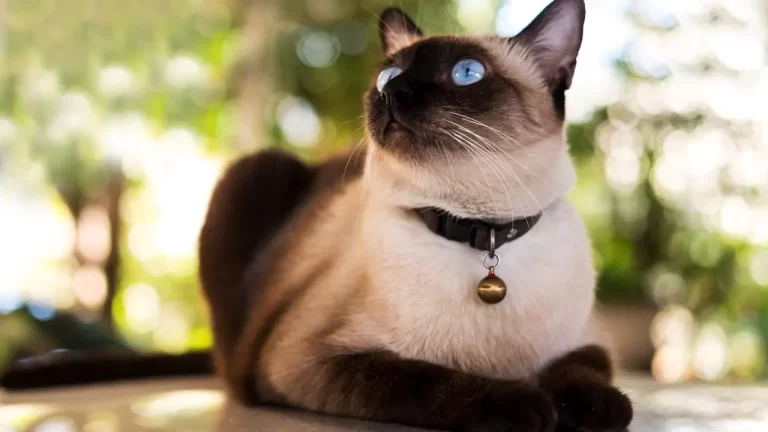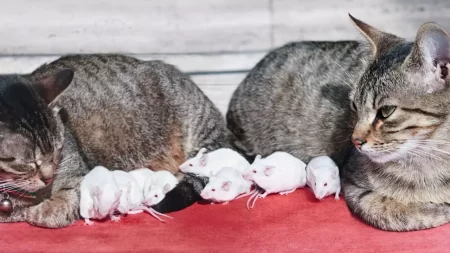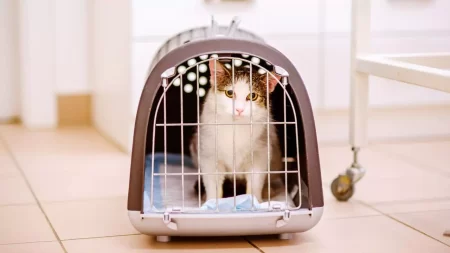While there is no such thing as a truly hypoallergenic cat, Siamese cats are considered to be one of the most hypoallergenic breeds.
This is because they produce less of the Fel d 1 protein, which is the main allergen in cat dander. Siamese cats also have short, fine hair that sheds less than other breeds.
Understanding Cat Allergies
What Causes Allergies in Cats?
People who are allergic to cats are reacting to the proteins found in cat saliva, urine, and dander. Dander is a mixture of dead skin cells and other bodily secretions that all cats produce. It is constantly floating in the air and can be difficult to avoid.
Common Symptoms of Cat Allergies
Common symptoms of cat allergies include:
- Sneezing
- Runny or itchy nose
- Watery or itchy eyes
- Congestion
- Wheezing
- Hives
In some cases, cat allergies can trigger asthma attacks.
Options for Managing Allergies
There are a number of things that people with cat allergies can do to manage their symptoms, including:
- Avoiding cats or spending as little time as possible around them
- Taking over-the-counter allergy medications, such as antihistamines or decongestants
- Getting allergy shots
The World of Hypoallergenic Cats
Explaining The Term “hypoallergenic”
The phrase “hypoallergenic” refers to an item’s decreased potential to trigger an allergic response. It’s crucial to remember, however, that no cat can claim to be 100% hypoallergenic. Some individuals are allergic to the allergens produced by even hypoallergenic breeds of dogs.
The Truth About Hypoallergenic Cat Breeds
There are a number of cat breeds that are often marketed as being hypoallergenic. However, it is important to remember that there is no such thing as a truly hypoallergenic cat. All cats produce allergens, and even breeds that are considered to be hypoallergenic can still trigger symptoms in some people.
The Siamese Cat and Allergies
Why Siamese Cats are Considered Hypoallergenic?
Siamese cats are considered to be one of the most hypoallergenic breeds because they produce less of the Fel d 1 protein than other breeds. They also have short, fine hair that sheds less than other breeds.
Low Shedding Qualities of Siamese Cats
Siamese cats are known for their low shedding qualities. This is because they have a single layer of fur, unlike other breeds that have a double coat. This means that Siamese cats shed less fur, which can help to reduce the amount of allergens in the home.
Other Quick Facts About Siamese Cats
Siamese cats are known for their intelligence, playful personalities, and distinctive blue eyes. They are also relatively low-maintenance cats, requiring only weekly brushing and grooming.
Tips for Living with a Siamese Cat and Allergies
Proper Grooming Techniques
Regular grooming can help to reduce the amount of allergens in your home. Be sure to brush your Siamese cat’s fur at least once a week to remove any loose hair. You may also want to bathe your cat regularly, using a mild shampoo.
Creating a Cat-friendly Environment
There are a number of things you can do to create a cat-friendly environment that is also less likely to trigger your allergies:
- Clean up your house and dust often.
- Use hot water to wash sheets and other fabrics to get rid of pests.
- If you want to clean the air, use a HEPA air cleaner.
- Do not let your cat sleep in your room.
- Place your cat’s scratching sticks in a certain spot.
Considerations Before Adopting a Siamese Cat
If you have cat allergies, it is important to consider the following before adopting a Siamese cat:
- Spend some time with a Siamese cat before adopting one to see how you react.
- Talk to your doctor about ways to manage your allergies.
- Be prepared to groom your Siamese cat regularly.
- Create a cat-friendly environment that is also less likely to trigger your allergies.
If you follow these tips, you may be able to live happily with a Siamese cat and your allergies.







